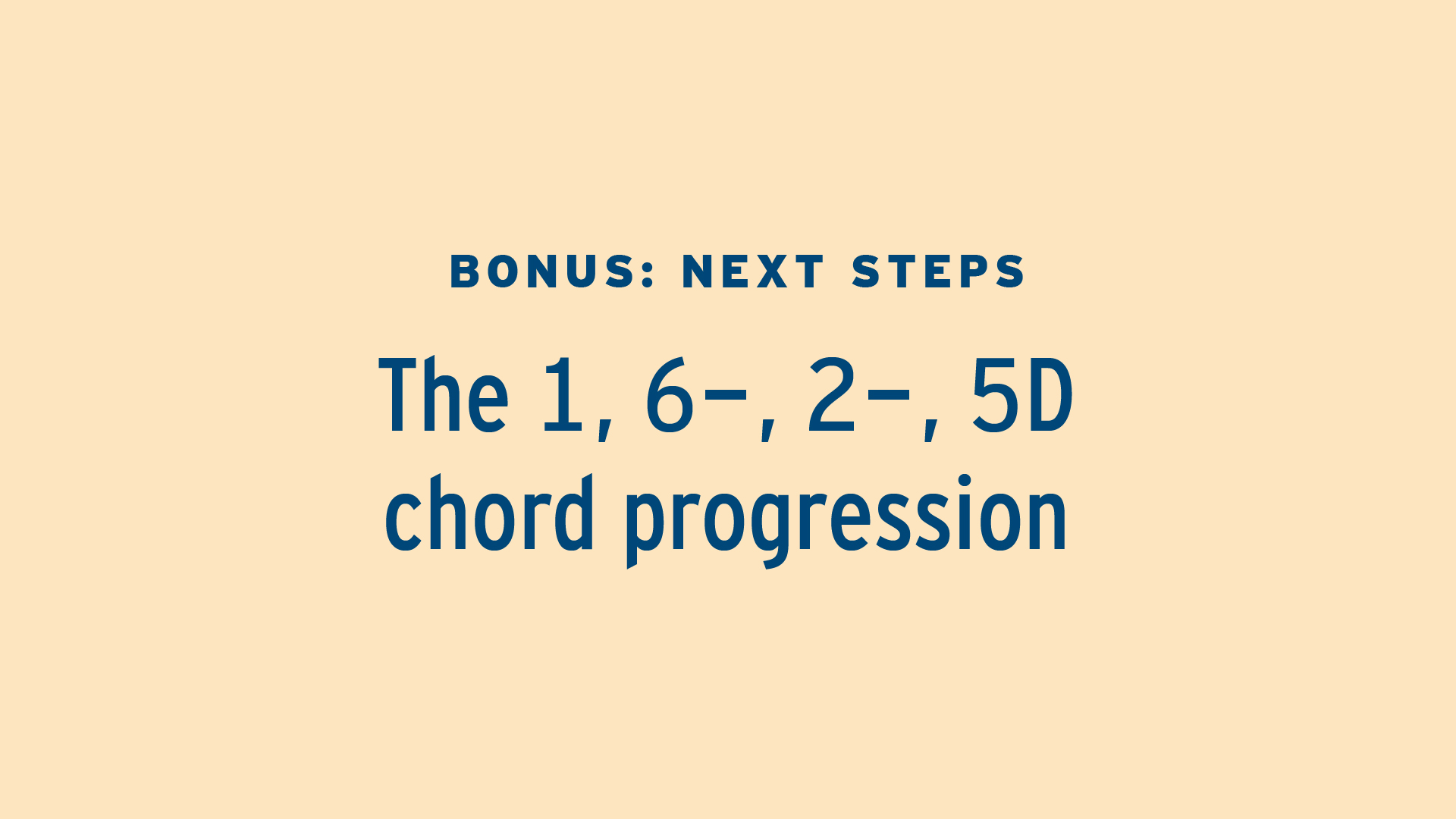This progression is very similar to the "50's progression" (1, 6-, 4, 5D) we studied in the course Recognizing Chords by Ear, and that's why it will sound very familiar to you already. There are even some famous songs that have versions with both variations. For example, you can find different versions of "Heart and Soul" and "Blue Moon" by different artists, some using 1, 6-, 2-, 5D, and others using 1, 6-, 4, 5D. If you want, you can try to play those melodies trying these to chord progressions and see for yourself how well they both work.
As I mentioned before, in a major context the 2- chord and the 4 chord have similar role in a progression, creating a suspended feeling. And sometimes, like in this case, preparing the tension of the 5 chord. In this short video I explain a little more about the 1, 6-, 2-, 5D chord progression:
IFR materials you will need
For all of the activities described below (and on the subsequent pages), you will need the following two resources:
IFR Jam Tracks Level 3: Pure Harmony Advanced Sing the Numbers 3: Melody Paths
After you have purchased these two courses, all of the links below will take you directly to the appropriate lesson pages.
Let's get started!
To study the 1, 6-, 2-, 5D progression, I propose the following activities:
1) Practice with IFR Jam Tracks Level 3: Pure Harmony Advanced
Lesson 7 - Chords 6- and 2- Lesson 8 - Chords 1, 6-, 2-, 5D
In lesson 7 you will study a pair of chords that's totally new to you: the 6- chord and the 2- chord. This movement appears in the 1, 6-, 2-, 5D progression that we are studying. So this way you will have studied in detail all the pairs of chords involved in this progression; 1-6, 6-2, 2-5 and 5-1.
Practice the following activities over each jam track:
a) Observe the sensation of the 2 chord. Just listen to the backing track and try to feel this chord without playing or singing anything. Just listen and feel. b) Sing/play the roots of the chords over the backing tracks (in many keys). c) Sing/play Melody Paths over the backing tracks (in many keys). The ultimate goal for this exercise is to be able to sing melody paths without the help of the instrument and without having to look at the drawing of the chord columns. d) Improvise freely over the jam tracks.
2) Sing the Numbers 3: Melody Paths
The 'Sing the Numbers' tracks can be a great complement to your practice, because you will hear me singing the melody first and you'll just have to sing it after me. This will allow you to focus on feeling the chords as you sing melodies across them. So I encourage you to sing and listen at the same time.
Lesson 13 - Chords 6- and 2- Lesson 14 - Chords 1, 6-, 2-, 5D
3) Playlist of songs with the progression 1, 6-, 2-, 5D
Listen to the songs on the list and try to follow the chord changes. First listen for a while to observe the sensations of the chords. You can also practice all the other activities above over the songs on this playlist (singing the roots, Melody Paths, improvising).
Playlist on Spotify: https://open.spotify.com/playlist/2qMJdWhhYl4Z0As84WaVS1?si=ffbeaaff80d14bb3
4) Feel the chords: 1, 6-, 2-, 5D or 1, 6-, 4, 5D?
I have created a playlist mixing songs that are based on the 1, 6-, 2-, 5D progression, and songs that are based on the 1, 6-, 4, 5D progression. Your assignment is to listen to each song and recognize whether the chords are 1, 6-, 2-, 5D or 1, 6-, 4, 5D.
Playlist on Spotify: https://open.spotify.com/playlist/09hZpiv0qPaqcjF4hlShN6?si=dcc4f7917bf2484d
Practice tip
Now that you are adding the 2- chord, don't forget about the other chords you studied in the Recognizing Chords by Ear course. I encourage you to keep those chords and progressions alive in your mind by singing Melody Paths and improvising over them.
Links to all extra activities
Lesson video: Where to go from here? Next steps: The 2- chord in a major context Next steps: The 1, 6-, 2-, 5D progression Next steps: The uplifting movement from 1 to 3- Next steps: Studying the 3- chord with its neighbors Next steps: Chords 2- and 3- in a minor context Next steps: The 6-, 5D, 4, 3- progression Next steps: Studying the 7-b5 chord
